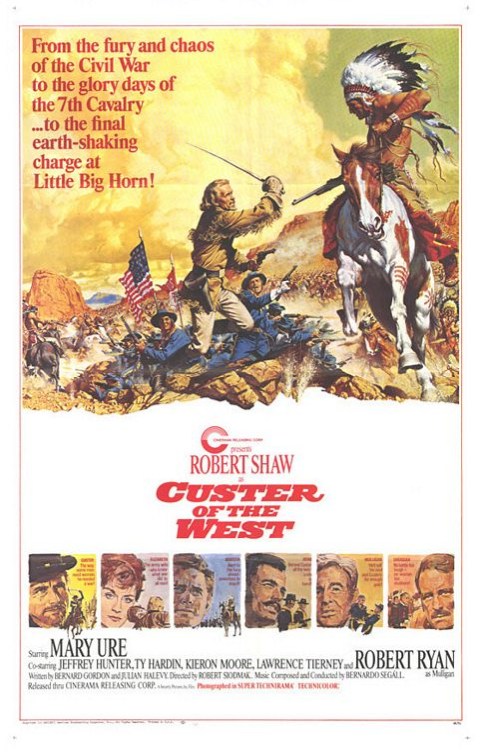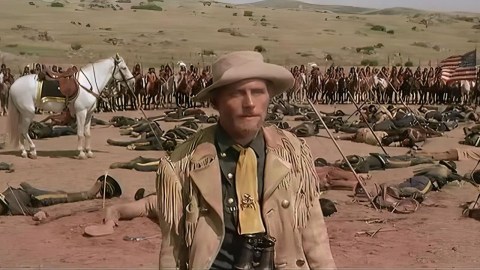17. 4. – 19. 4. 2026
Custer of the West

 Original title: Custer of the West
Original title: Custer of the WestDirector: Robert Siodmak
Production: 1967, USA
Length: 140 min.
Screened:
KRRR! 2019: 70mm 2.2:1, Colours faded, Digital Sync, Spoken language: English, Subtitles: CzechAnnotation for KRRR! 2019
The famous, yet controversial figure of American history, George Armstrong Custer, has appeared on the big screen many times. The first of the "Custer" westerns, the one-reel On the Little Big Horn or Custer's Last Stand, was filmed as early as 1909. The images of the lieutenant colonel that these fictional films created differed from each other. Some of them created his image as a war hero, others, on the contrary, depicted him as an egotistical killer of American Indians, but they could also oscillate between these two poles. In 1967, another of his portraits came to the big screen, General Custer, directed by Robert Siodmak, one of the well-known masters of film noir, in the main role with Robert Shaw. After his success in the Civil War, George Armstrong Custer still craves action. He receives the 7th Cavalry in the West under his leadership from his military general Sheridan. He goes there with his wife Elizabeth to solve the “Indian problem”. Although he fulfils his military duty thoroughly, he is aware of how the government violates the rights and agreements it has concluded with the American Indians…
General Custer is known, in addition to filming the Technirama process, for its historical inaccuracy, when it offers an alternative view of the Custer legend. For example, let’s mention the change of Custer’s main opponent to another chief, the locations filmed in the Spanish deserts, the altered most famous battle of Little Bighorn, or even the very deviation from the dominant historical interpretations of the character, actions and rank of an officer in the general’s film. However, these historical deviations can be seen as a special element of the film, as they allow us to watch the transformed reality of a generally known story. The choice of historical fact adaptation makes the film another alternative view of this famous military figure.
In addition to the natural compositions, the exciting action sequences of the battles between Custer's cavalry and the American Indians stand out visually on the widescreen. Also outstanding are the thrilling point-of-view shots of miners tied to a wagon falling from a cliff, a soldier escaping through a water channel, and even a speeding train. The final climax of the famous battle must not be forgotten, which is all the more thrilling and captivating thanks to its fictionalization of history and use of space.